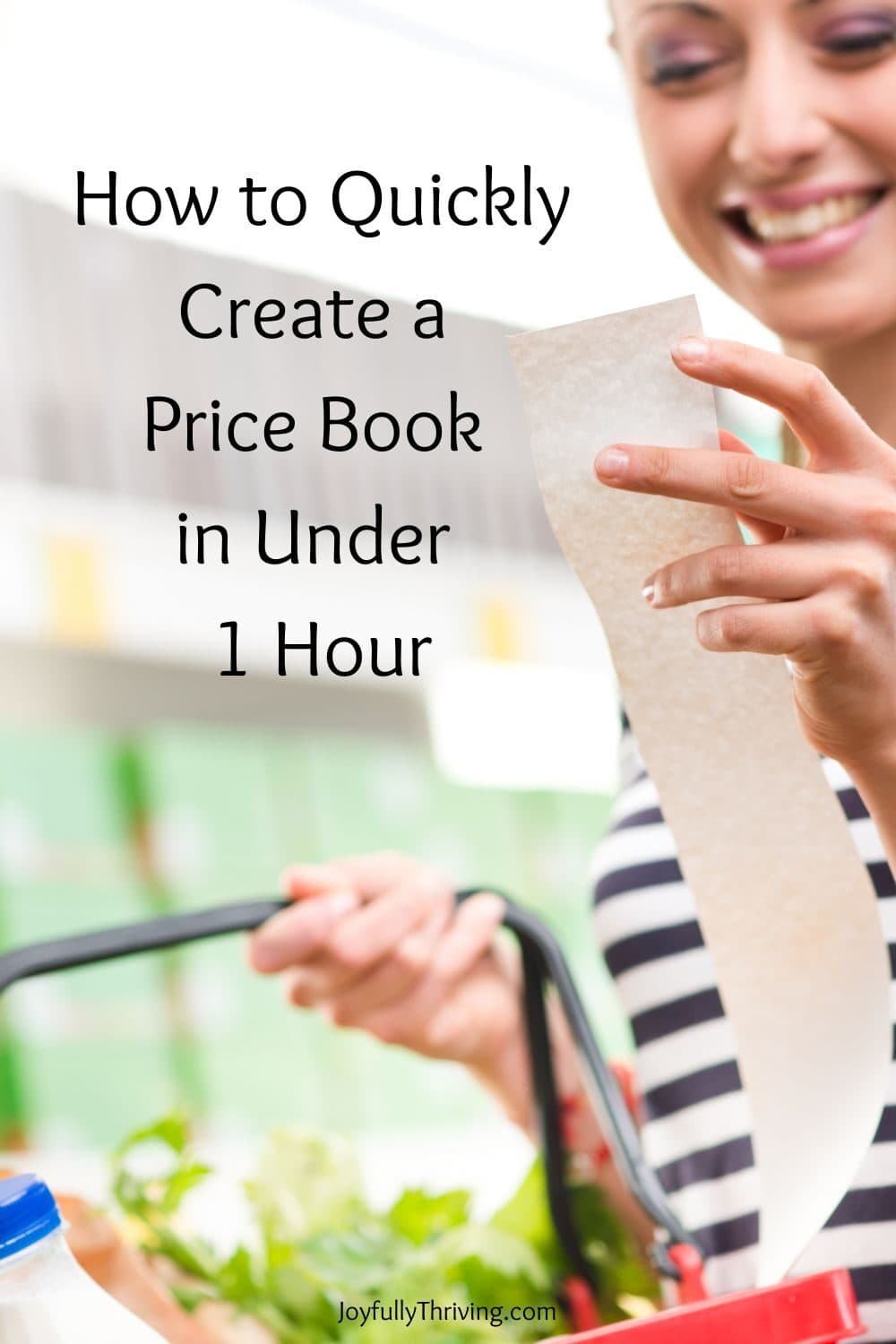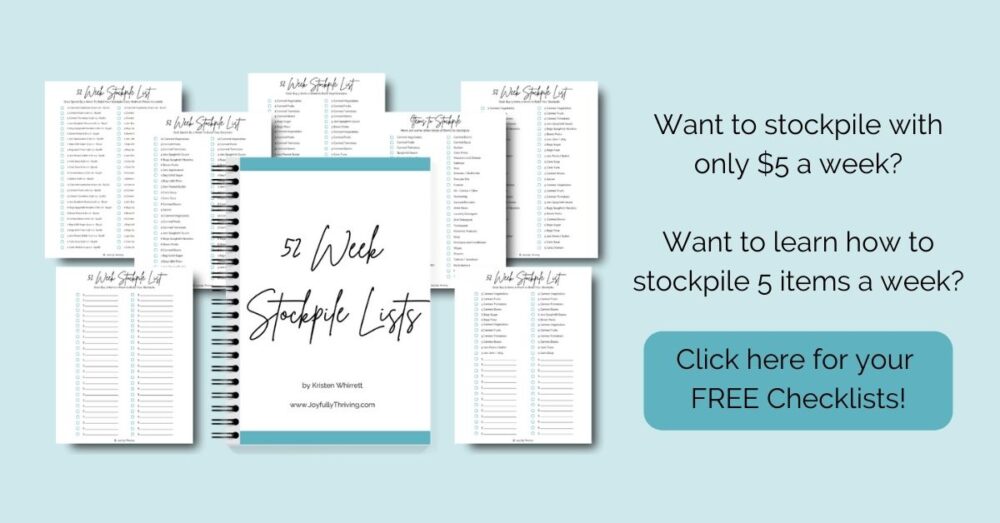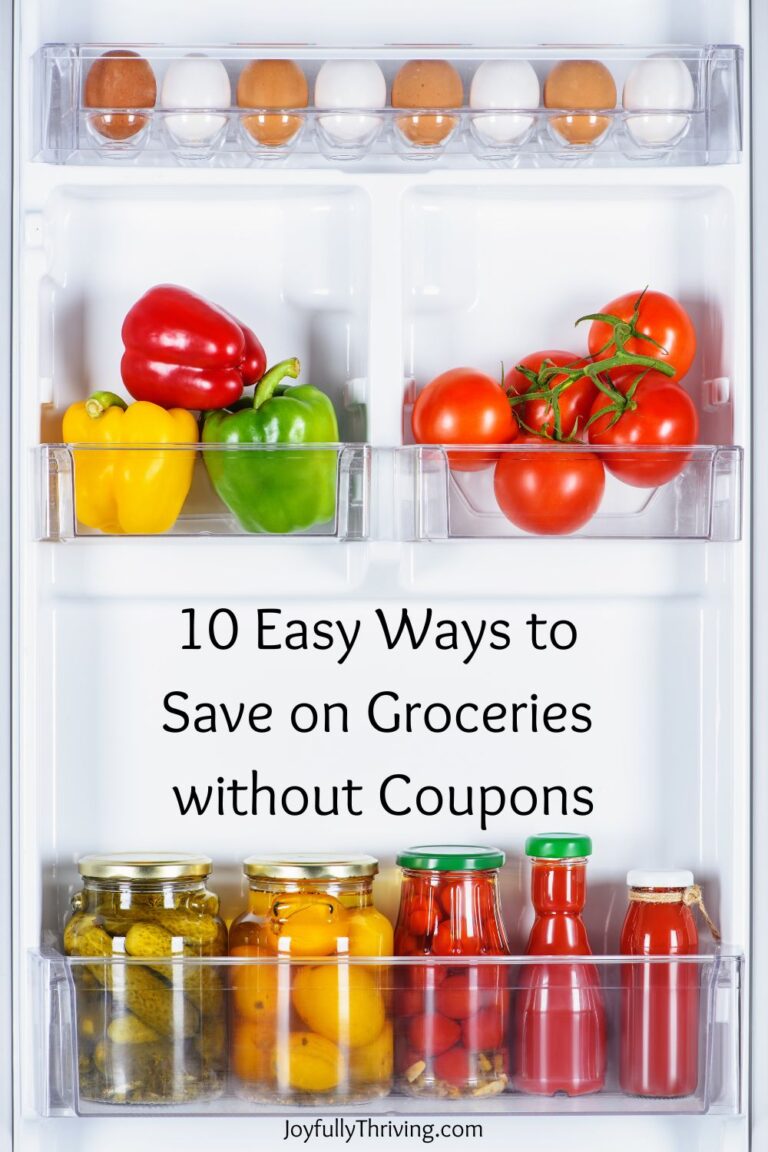How to Make a Price Book in Under 1 Hour
If you want a quick way to be sure you are buying grocery items at their lowest prices, learn how to make a price book. It will save you so much money on your groceries!
If you ready to focus on saving money on your groceries, you need a price book.
You may have heard that term floating around, so I’m going to explain what it is, why you need one, and how to quickly and easily create your own price book.
Some people attempt to make the concept a price book harder than it needs to be. Creating and using a price book doesn’t have to be complicated, and it will make saving money on your grocery budget so much easier.
Let’s talk about price books.
This post may contain affiliate links. As an Amazon Associate, I earn from qualifying purchases. You can read more in my disclosure policy.
What is a price book?
A price book is a list of grocery items and their prices at different stores. That’s it. Pretty simple, if you think of that way!
A price list is a tool that frugal shoppers use to keep track of the lowest prices. A price book helps you save money if you record every day prices as well as sales. Adding sales to your price book allows you to stock up when you see a good sale.
The most important thing is that a price book will help you know the best price you can get on items you regularly purchase.
Why do I need a price list?
In the most basic form, knowing the prices of items you regularly purchase at different stores, allows you to be a smart shopper.
By knowing the lowest prices, you will be able to find those items at the store when you shop. If you only go to Aldi every other month, stock up on their lowest priced items when you are there – and buy enough to last until the next time you go back.
As you develop your price book, you can add in sale prices. This lets you know if the sale is really a good deal. With a price book, you can easily glance through your prices and see if you need to stock up on this sale.
Your price list will be unique to you. That is how it should be. Your list should be of the items you buy, and the prices at your stores. This is how you save money with a price list.

How do I make a price book?
First, you need to decide how you are going to make your price book. You can make the list on your phone, on paper or in a Google Doc. I recommend paper, at least to get started, because it’s easy to carry with you in your purse and reference whenever you need it.
For a super quick way to get started, print off this blank price book template I created for you.
It is a one page chart, with space for 25 items at 4 different places. Need more? Print as many pages as you need. Get your free printable price book here.
Now that you have your format ready, let’s make your price list with these 3 easy steps.
1. Make a list of 20 to 25 items that you regularly purchase.
Your goal is to keep this simple. Yes, it would be great to compile a list of everything you buy, but let’s start small. Don’t get overwhelmed by trying to do this all at once.
Make a list of the top 2 dozen items you regularly purchase. This will make a big difference to focus on the prices of these items instead of the items you only buy once or twice a year.
2. Find the prices at 2 to 4 stores close to you.
Pick the store or stores at which you regularly shop. I encourage you to include Walmart or Aldi in your price book (if not both) because I have found them repeated to rank as the cheapest grocery store.
Again, you can always include more stores down the road, but start by comparing prices at no more than 4 stores.
I know this seems like a lot of work, but you can do this very quickly – in less than an hour – if you use my little trick. Use store apps (or websites) to compare prices.
Open up the store app, search for the product, and fill in the every day price on your price list. I tend to use the lowest generic prices, but if you have a particular name brand you want to track, do that instead. (Do not include sales yet, as that comes later!)
The only store this does NOT work for is Aldi or any store that uses Instacart to fulfill orders, as their prices online are higher than the prices in store. Save your receipts and fill in prices this way, or take your list along with you next time you shop at Aldi to fill in the missing prices.
Don’t worry about getting your price book perfectly right. Just start filling in the prices so you can use it. You can always update it later – and you should, as prices change!
Here’s a peek inside my price book.
This is my updated price book as of September 2022.
| Items | Aldi | Kroger | Walmart | Sale Prices |
| Apple Juice, 64 oz | $1.59 | $1.89 | $2.58 | $1.29 Kroger |
| Applesauce, Cups | $1.79 | $2.19 | $1.98 | |
| Applesauce, Jars | $2.69 | $2.99 | $2.72 | |
| Butter | $3.98 | $4.19 | $4.48 | $2.49 Kroger |
| Canned Black Beans | $0.76 | $0.79 | $0.78 | |
| Canned Corn / Beans | $0.58 | $0.89 | $0.58 | |
| Canned Peaches | $1.25 | $1.50 | $1.25 | |
| Canned Tomatoes, 14.5 oz | $0.72 | $1.00 | $0.88 | |
| Canned Tomatoes, 28 oz | $1.19 | $1.69 | $1.36 | |
| Cheese, Blocks, 8 oz | $1.99 | $2.49 | $2.00 | $1.49 Kroger |
| Cottage Cheese, 24 oz | $2.45 | $2.49 | $2.58 | $1.99 Kroger |
| Cream Cheese | $1.59 | $1.99 | $1.68 | |
| Eggs, Dozen | $1.92 | $1.99 | $1.84 | |
| Flour, 5 lbs | $2.12 | $2.49 | $2.12 | |
| Frozen French Fries | $1.75 | $2.49 | $1.98 | |
| Graham Crackers | $1.59 | $2.49 | $1.98 | |
| Milk | $2.92 | $3.19 | $2.93 | $1.99 Kroger |
| Oats, 42 oz | $3.49 | $4.29 | $3.98 | |
| Pasta, 16 oz | $0.92 | $1.33 | $0.92 | |
| Peanut Butter | $1.69 | $1.69 | $1.74 | $1.50 Kroger |
| Tortilla Chips | $1.79 | $1.99 | $1.82 | |
| Ritz Crackers, Generic | $2.19 | $3.29 | $2.24 | |
| Sour Cream, 16 oz | $1.69 | $2.19 | $1.96 | |
| Sugar, 4 lbs | $2.75 | $2.69 | $2.84 | |
| Sugar, Brown / Powdered, 2 lbs | $1.69 | $1.79 | $1.70 | |
| Triscuits, Generic | $2.19 | $2.79 | $2.42 |
You may be surprised by what you learn when making your price book! I was surprised that currently some of the Kroger prices are actually lower than Walmart – which claims to be the lowest.
It is also easy to see that the sales at Kroger (which is normally a high priced store) beat the every day low prices at Aldi or Walmart. It’s why I shop at a combination of both stores.
3. Start using your list and slowly add sale prices.
Now that you have your price book ready, it’s time to start using it!
This first part has helped you find your cheapest grocery store for your family! Yes, I did a massive price comparison on the cheapest grocery store, but do your findings agree?
When you go shopping, take your list along, or take a picture of your price list so you can quickly reference it at any store. Use your price list to make sure you are buying your groceries at the lowest priced store available to you.
If you see an item on sale that you frequently use, look at your price book to see how good of a sale it is. Recently, I was able to buy apple juice on sale for $1.29, saving me over $0.60 a bottle on the cheapest every day price. I bought 5 bottles for us to use over the next month, and just like that saved $3.
The more times you use your price book to stock up on sales, the more savings you will see in your grocery budget.
If you want to see the prices I get on groceries, subscribe to my YouTube channel for weekly grocery haul videos.

What else do I need to know about creating my own price book?
Start small. There is a reason I say to start with around 20 items. I don’t want you to get overwhelmed! Start with 2 dozen items now, and then, add another 2 dozen items next month, if you want to compare more prices. By starting small with the items you frequently use, you can quickly get this project done.
Don’t invest too much time into this project! It should take you only 5 to 10 minutes to come up with your list of items that you regularly buy. Have trouble thinking of those items? Look over recent grocery receipts to jog your memory.
If you use store apps to compare prices, finding the prices should take no more than 15 minutes per store. If you have to drive to a store, yes, it will take a bit longer, but minus the driving time, it should still be an hour or less for this project.
Enter the prices of the stores with apps first, before you shop at Aldi or wherever you need to fill in prices. This will allow you to stock up on the better deals already, as you fill in the prices because you’ll already be able to compare.
Consider the unit price or price per ounce. If you really want to track your savings, consider making your price book by comparing the unit ounces. This is helpful if you discover that your stores carry different sizes of the same products, such as peanut butter or tortilla chips. To find a unit price, divide the total price by the number of ounces in a product.
Update your price book once or twice a year. With prices changing so quickly due to inflation, keeping your price book updated is helpful.
I hope this answered all your questions about how to make a price book. If you still have more questions, be sure to leave a comment so I can help! Having a price list is a great way to save money on groceries. Do you already have a price book, or are you going to make yours now?










normally when I click on articles like yours, I’m bored of reading it 10 seconds after the page opens, bc it just doesn’t grab my attention. But this article on the other hand..and actually all of the articles you’ve written that I’ve read so far, have all been spot on! The instructions are easily understandable, your links for examples to see how you did it for yourself is so helpful too! You don’t ramble or make things more complicated then they need to be or even complicated at all! Thanks so much! You’re my favorite person today! and many days to come! 😎🤘
Great instructions. I will print out the page and see what I come up with
I was literally saving my receipts to do this. Thank you especially for posting your list because about half of my top reg items match yours. I just copied yours into excel, swapped a few for my items & am off & running!!